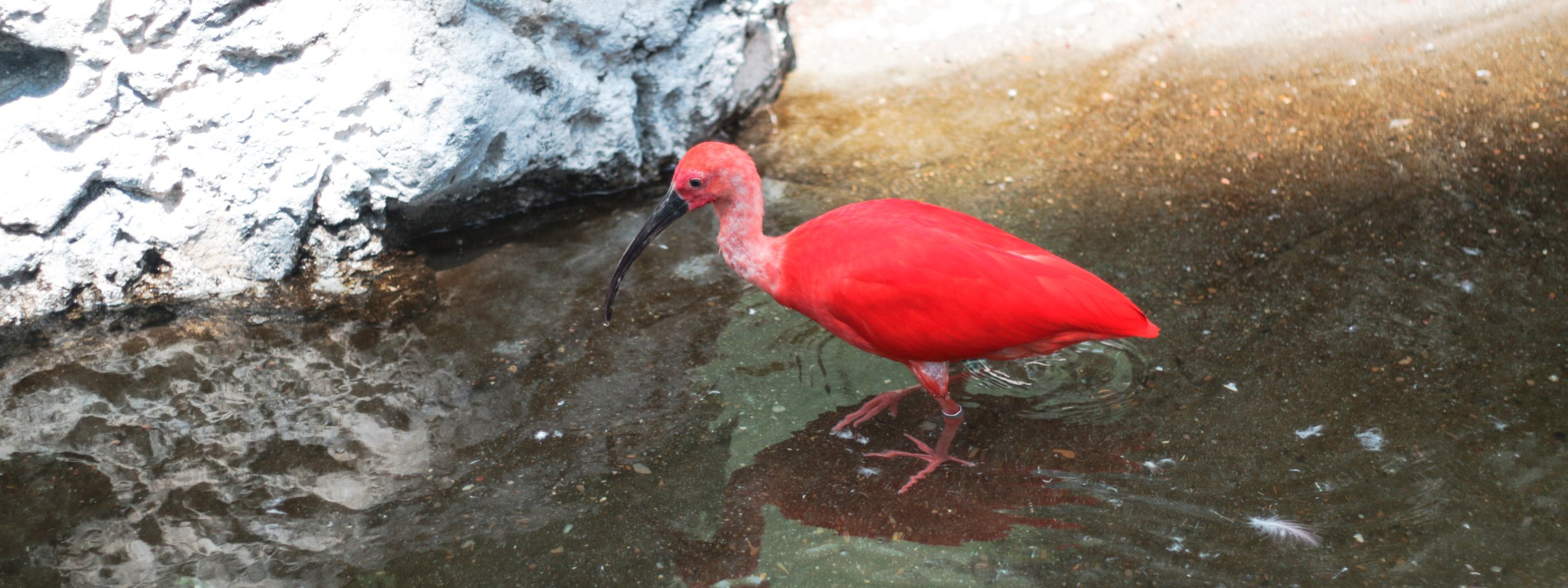
Scarlet Ibis
Scarlet Ibis
This beautiful orange-red Ibis is the Scarlet Ibis, also known by the scientific name Eudocimus ruber. You can find the Scarlet Ibis in northern South America stretching from Venezuela to eastern Brazil. The Scarlet Ibis follows migratory patterns as most birds do traveling according to the season. It prefers swampy environments such as mudflats and shallow bays preferring to roost and nest in trees. This bird is another animal that relies on the mangrove for safety.
The Scarlet Ibis belongs in the same family as spoonbills but all Ibises have slightly webbed feet and a thin downward curved bill. They fly like geese with their neck stretched all the way forward and their beak pointed forward as well. Ibises are wading birds but the Scarlet Ibis can be told apart by its intense red plumage.
The Scarlet Ibis’ bright red color fades to pink in captivity unless they are given a specific diet of high protein and shrimp meat. This is interesting because the Scarlet Ibis is different from the Flamingo in its coloration. While the intense red will fade its color is natural and based on nutrient intake rather than carotenoid-rich prey food.
The Scarlet Ibis makes a honking noise to communicate in various situations. The young have a different shrieking sound they use to attract their parents’ attention for food. The mature adults use honking noises during mating and an important fact is touch is important during courtship.
The male and female will greet each other with a honk, and wrap their necks together, then the male and the female make different noises from each other. The male makes a honking sound and the female will make a shrill squealing sound.
As the same difference between the flamingos and the scarlet Ibis is the pigment of their feathers, flamingos’ pink color will fade with time and the scarlet Ibis will maintain its extraordinary pigmentation. Since this is the case, the Scarlet Ibis is a target for hunters who use the bright red feathers as decorative objects.
There is no real negative impact on humans from the scarlet Ibis except in large flocks the Scarlet Ibis is considered a nuisance in places close to human habitations. The Scarlet Ibis is not considered to be in any immediate danger but it is protected by the US migratory bird treaty act, is listed as Appendix II by CITES, and is excluded from the IUCN Red List.















